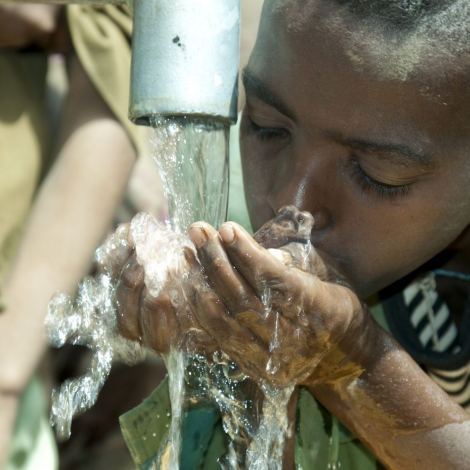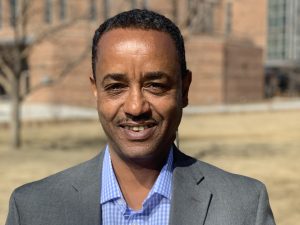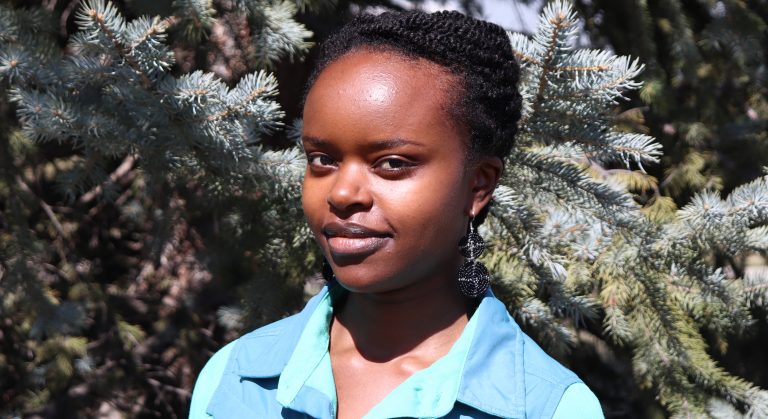Engineering for Change invites Dr. Evan Thomas, Director of the Mortenson Center in Global Engineering at the University of Colorado Boulder, to share a series called Profiles in Global Engineering. The profiles are interviews with engineers working in global development, each adapted from Dr. Thomas’ book, The Global Engineers: Building a Safe and Equitable World Together.
Petros Birhane was raised in rural eastern Ethiopia with nine siblings. Upon graduation with a degree in agricultural engineering, Mr. Birhane embarked upon a career in water access development and international disaster relief. The work took him throughout Ethiopia, South Sudan, Pakistan and Indonesia improving water access, assisting refugees and helping communities recover from tsunamis, droughts and other disasters. He now leads an internationally funded effort to improve water and sanitation access in the lowlands of Ethiopia.
Dr. Evan Thomas asked Petros Birhane five questions about his experience, his work and the future of water access in Ethiopia.
ET: You’ve had personal experience with lack of water access and you had to work for your water while growing up. Would you describe that, please?
PB: We had two springs and during my childhood, as with the rest of Ethiopians, we used to collect water. Usually, we collect water in the early morning. It’s two, three kilometers one way. Out of the two spring sources, one of the spring sources, we were told, ‘Don’t go to that one.’ To me, I think it was closer, but quality wise, I realized no. Quality wise, it has, I think maybe minerals, iron, soap – it doesn’t taste good. We always go to the furthest one. I know about the challenges associated with access to safe water sources. I know what it means.
I know what it means, what a humanitarian situation is, and what humanitarian responses are even from my childhood.
For us, depending on the age, we were given a different size of jerry cans, but I always carried five-liter jerry cans. That’s how I started to know the importance of water. We always wait for our turn in the queue to collect water from scoop holes, which as not even an improved water source.
ET: Early in your career you crossed over from work with the government to work in humanitarian organizations. What led you to make that change?
PB: After graduation, I worked for the Oromia Water Mines and Energy Resource Development Bureau, East Hararghie Office. I had a chance to witness the challenges the community is having to access improved water sources. The eastern part of Oromia is known for droughts and critical water shortages. During my childhood, I also had a chance to witness two or three drought famines. In the place where I was raised, Girawa, I recall seeing many rural people displaced by the famine. I know what it means, what a humanitarian situation is, and what humanitarian responses are even from my childhood.
After working for almost four years with the government office, I said I have to join an organization that works for humanitarian responses. I joined CARE International.
Luckily enough, I joined the Field Office in Grawa – the place where I was raised. This gave me a chance to work with my colleagues for three years to support the community I came from. I witnessed the advantages and the benefits. I had a chance to see the impacts of our work and the happiness of the community I came from. That’s a big reward to me, and then I got motivated for a bigger cause. I said, I have to look for better opportunities to expand my contribution, and I joined the International Rescue Committee (IRC) in 2003 in the West Harargie Field Office.
ET: An important aspect of your work in Ethiopia now is improving the quality of rural water systems. With the lack of a national standard, how have you moved forward?
PB: Because of the lack of standards, each project is designed using the experience of the implementing organization. They use their own organizational experience and their educational background. Currently for the project I am running, we developed standard design guidelines to be used by our partners to make sure that what we are doing meets the technical requirements and specifications set both during the design stage and the construction stage. We want to take this experience to the national level. We are working to support the Ministry of Water, Irrigation and Energy (MoWIE) to have this standard established.
ET: Solar-powered water pumping is catching attention in Ethiopia, but you’ve mentioned some of the obstacles the technology faces. What are they?
PB: Solar is peaking, and the government has a huge interest and plan to promote the use of solar water pumping both for domestic and irrigation purposes. There is a huge gap by partners, even private suppliers, [regarding] properly specifying the right solar pumping equipment for specific needs. Due to this, many solar pumps, which are already installed, failed immediately after installation.
Solar is peaking, and the government has a huge interest and plan to promote the use of solar water pumping.
“We are working with the MoWIE, with the Ethiopian Water Technology Institute, well-known solar pump manufacturers and also with private suppliers and consultants at the national and regional level to improve proper use of solar water pumping in the country. Together with the Ministry and other key partners, we supported the development of solar design guidelines. Currently, we are also working with MoWIE and the Ethiopian Standard Agency to support the Ministry in having a quality standard for use at the national level. These efforts will contribute to having sustainable water supply services in the country.”
ET: What is the outlook for water access in rural Ethiopia today?
PB: In rural parts of Ethiopia, water is key. For example, if you ask the Somalia Regional Water Bureau about the top three priorities of the region, you get answer: ‘Priority one, water, priority two, water, priority three, water.’
Currently, O&M of rural water supply services are handled and managed mainly by community-based management committees. This is a great initiative, but the reality is showing that this is not enough, and alternative approaches and modalities are required, including use of the private sector.
O&M of rural water supply services are handled mainly by community-based management committees. This is a great initiative, but the reality is showing that this is not enough.
In Ethiopia, we have been hit by recurrent droughts in the past starting from the one in 1985, which was one of the worst. The contribution of humanitarian agencies in countries like Ethiopia is critical to fill gaps. Even today, there are a significant number of humanitarian agencies and development agencies supporting the Government of Ethiopia and communities in humanitarian and development contexts.
“In the last couple of years, Ethiopia has made significant improvements in health, education, food security, and economic growth. Regardless, the country is still experiencing humanitarian and development challenges resulted from numerous factors including recurrent draughts, flooding, poor agricultural practices, land degradation, and high population growth.


